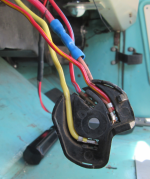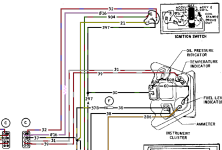?i checked the voltage at the coil...8v with the switch on...12v engine running at idle.
What is voltage across battery terminals, with key on...and engine running at idle?




?i checked the voltage at the coil...8v with the switch on...12v engine running at idle.
This isn’t good. It means your bronco still has the resistance wire installed, which your Petronix probably won’t like. You should be reading just over 12 volts key on not running and closer to 14 with it running. The electronic ignition needs full battery voltage to operate correctly.i checked the voltage at the coil...8v with the switch on...12v engine running at idle.
does it show a charge when it is hooked up??i just disconnected the alternator cable at the fuse block. the engine cranked right up and is running fine. the voltmeter showed no charge. so i think whatever i thought was wrong seems to be gone.
you did. Oldtimer was asking the voltage reading is between the two battery terminals with the engine running. This will tell you if your alternator is charging.i thought that i had posted my latest attempt. at any rate, i disconnected the cable to the alternator at the fuse block. engine cranked right up and ran fine.
. . . i find no evidence of a ballast resistor but evidently something is still reducing voltage to the coil. what wire should i look for that has resistance between the ignition on and the positive coil post?







Love that you're 83, posting on a forum, and working on a Bronco!!!thanks guys. im 83 so twisting like a pretzel is something for me to avoid. i believe that satisfies my question. brown at the relay and green/red at the vr and probably cap off the resister wire.






